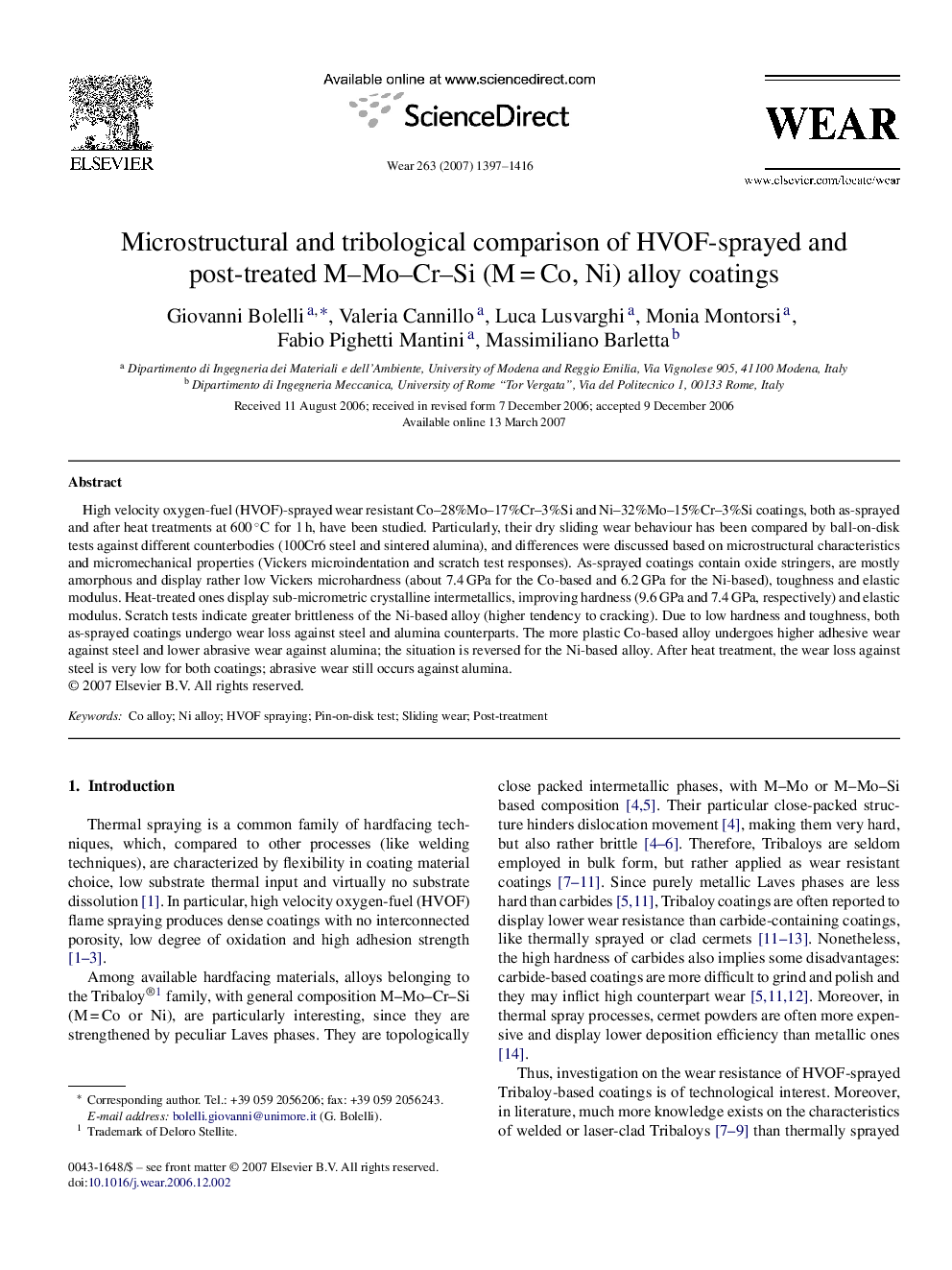| کد مقاله | کد نشریه | سال انتشار | مقاله انگلیسی | نسخه تمام متن |
|---|---|---|---|---|
| 620039 | 1455063 | 2007 | 20 صفحه PDF | دانلود رایگان |

High velocity oxygen-fuel (HVOF)-sprayed wear resistant Co–28%Mo–17%Cr–3%Si and Ni–32%Mo–15%Cr–3%Si coatings, both as-sprayed and after heat treatments at 600 °C for 1 h, have been studied. Particularly, their dry sliding wear behaviour has been compared by ball-on-disk tests against different counterbodies (100Cr6 steel and sintered alumina), and differences were discussed based on microstructural characteristics and micromechanical properties (Vickers microindentation and scratch test responses). As-sprayed coatings contain oxide stringers, are mostly amorphous and display rather low Vickers microhardness (about 7.4 GPa for the Co-based and 6.2 GPa for the Ni-based), toughness and elastic modulus. Heat-treated ones display sub-micrometric crystalline intermetallics, improving hardness (9.6 GPa and 7.4 GPa, respectively) and elastic modulus. Scratch tests indicate greater brittleness of the Ni-based alloy (higher tendency to cracking). Due to low hardness and toughness, both as-sprayed coatings undergo wear loss against steel and alumina counterparts. The more plastic Co-based alloy undergoes higher adhesive wear against steel and lower abrasive wear against alumina; the situation is reversed for the Ni-based alloy. After heat treatment, the wear loss against steel is very low for both coatings; abrasive wear still occurs against alumina.
Journal: Wear - Volume 263, Issues 7–12, 10 September 2007, Pages 1397–1416